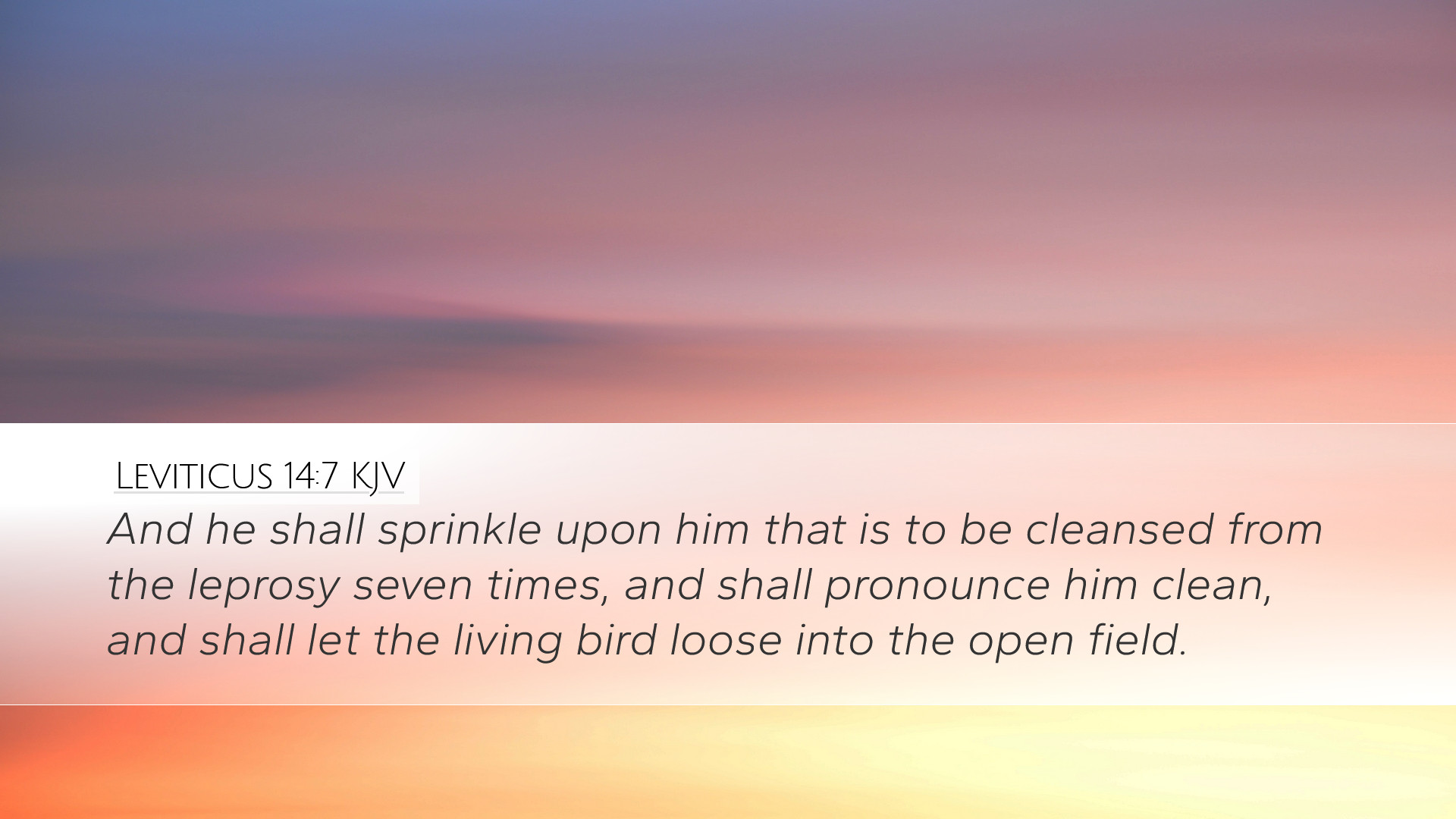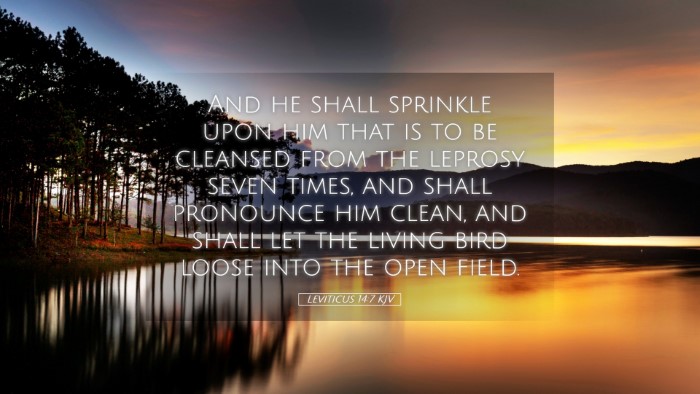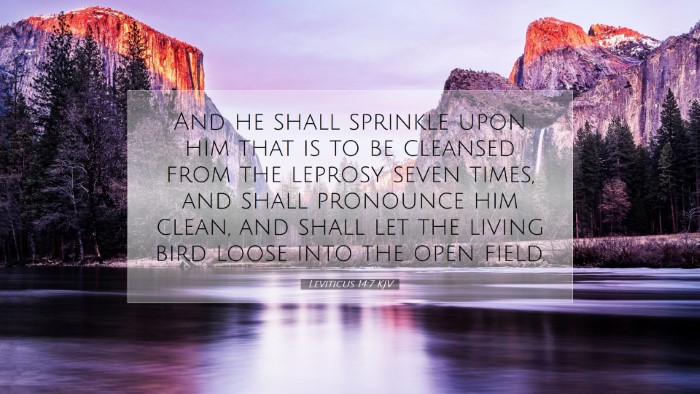Exegesis of Leviticus 14:7
Leviticus 14:7 states: "And he shall sprinkle upon him that is to be cleansed from the leprosy seven times, and shall pronounce him clean, and shall let the living bird loose into the open field." This verse occurs within the ritual for the cleansing of a leper, and it carries profound theological and practical implications that deserve careful analysis.
Contextual Background
The context of Leviticus 14 deals with the laws concerning leprosy, a condition of severe skin diseases that rendered individuals ceremonially unclean (Leviticus 13). The procedures outlined here not only served as a medical and hygienic guideline but also as a spiritual cleansing ritual. It is crucial for understanding how God intended to communicate holiness to His people through these laws.
Commentary Insights
Matthew Henry's Commentary
Matthew Henry emphasizes the *symbolic nature* of the offerings prescribed for the leper's cleansing. He notes that the "two birds" represent the dual aspects of Christ's sacrifice—His death and resurrection, illustrating the *work of atonement.* The act of sprinkling signifies the application of Christ's blood for the cleansing of sin, akin to the act of baptism, which also symbolizes purification and new life.
Albert Barnes' Notes
Albert Barnes provides insight into the significance of the *number seven* in this context. He points out that seven represents completion and perfection in biblical numerology. Thus, the act of sprinkling seven times signifies complete cleansing from leprosy, paralleling the totality of Christ's redemptive work. Barnes also mentions the necessity of a priest's intervention, highlighting the importance of spiritual authority in the process of healing and restoration.
Adam Clarke's Commentary
Adam Clarke delves into the ritualistic aspects, explaining that the living bird, released into the open field, symbolizes *freedom and restoration.* Clarke interprets this release as a demonstration of the leper's new status as clean and acceptable in society, emphasizing the transformation from separation to communion within the community of God’s people. He underscores the *mercy of God* in providing a means of restoration for the afflicted.
Theological Implications
The cleansing of the leper in Leviticus 14:7 provides rich theological insights relevant for pastors, students, and scholars:
- Divine Mercy: The elaborate ritual indicates God's willingness to restore the broken. It illustrates His compassion and readiness to cleanse the outcast.
- Holiness: The process reflects the necessity of *holiness* for worship in the presence of God and signifies that sin produces separation.
- Christological Fulfillment: This verse foreshadows the work of Christ in healing both soul and body, as seen in the Gospels where Christ cleansed lepers (e.g., Matthew 8:1-4).
Practical Applications
When interpreting Leviticus 14:7, we must also consider its practical applications for believers today:
- Restoration: Just as the leper was restored to the community, the church is called to be agents of reconciliation and healing for the marginalized.
- Ritual and Remembrance: The sprinkling ritual can remind Christians of the continual need for cleansing from sin, calling to mind 1 John 1:9.
- Faith in Action: The leper's trust in the process can encourage believers to act in faith, approaching God for healing and restoration.
Conclusion
Leviticus 14:7 serves as a profound reminder of God's redemptive purpose for humanity. The rituals prescribe a method to express His love, grace, and the promise of restoration. For pastors, students, and theologians, this verse not only illuminates the sacredness of the cleansing process but also points to the overarching theme of hope and reconciliation found throughout Scripture. The intricate details in the process reflect the complexity and depth of God's plan for our cleansing and restoration through Christ.


